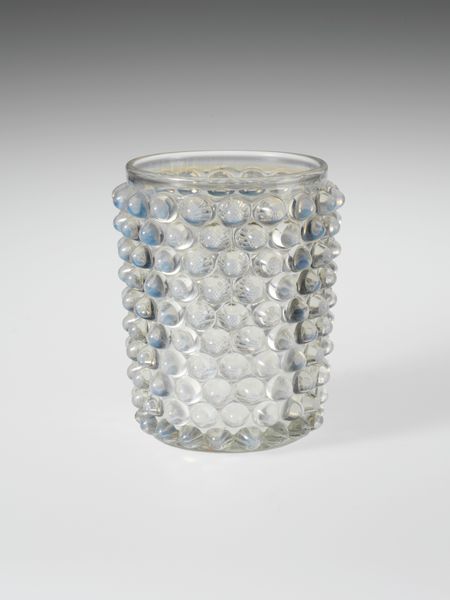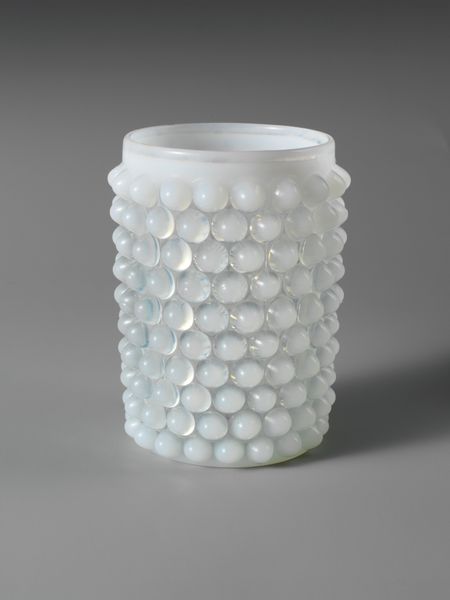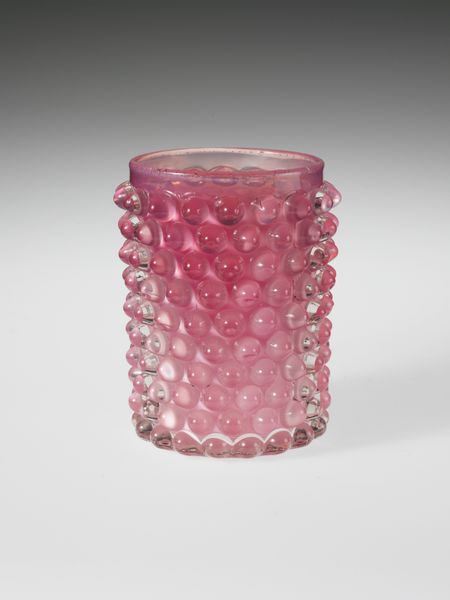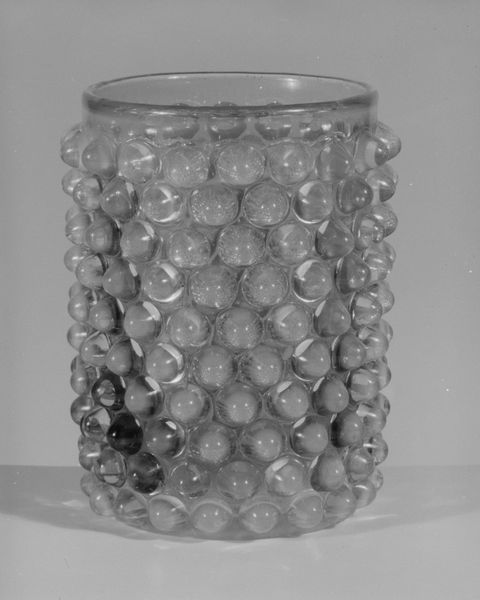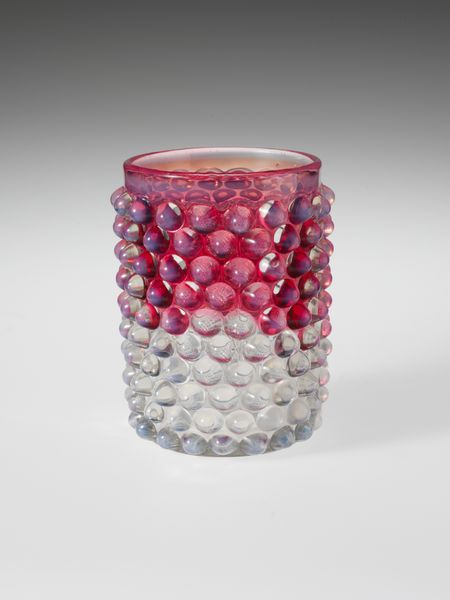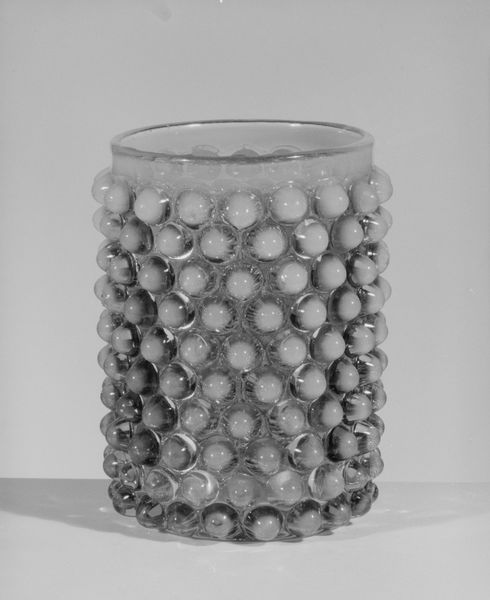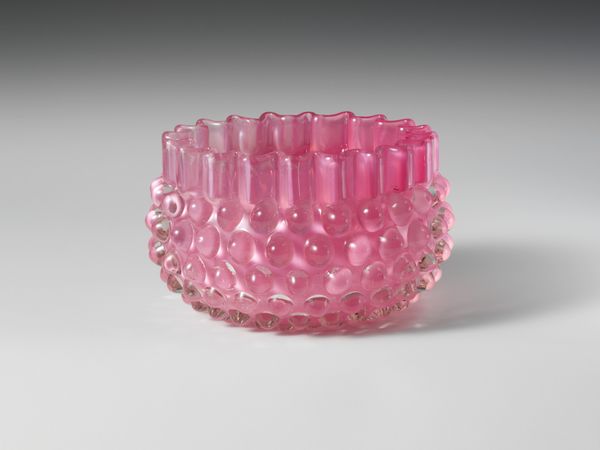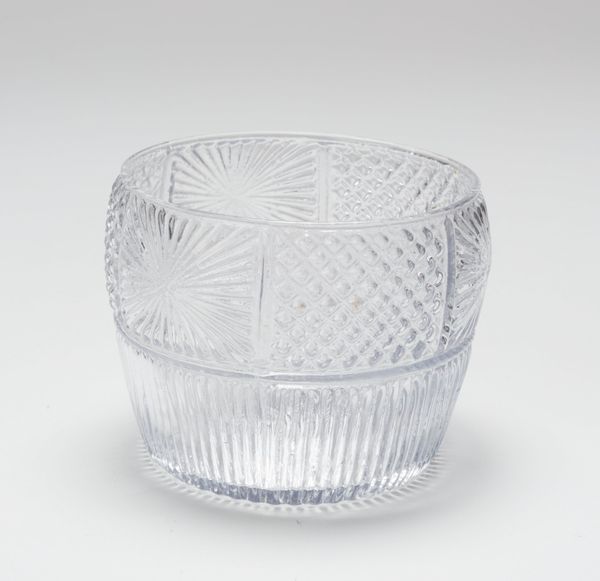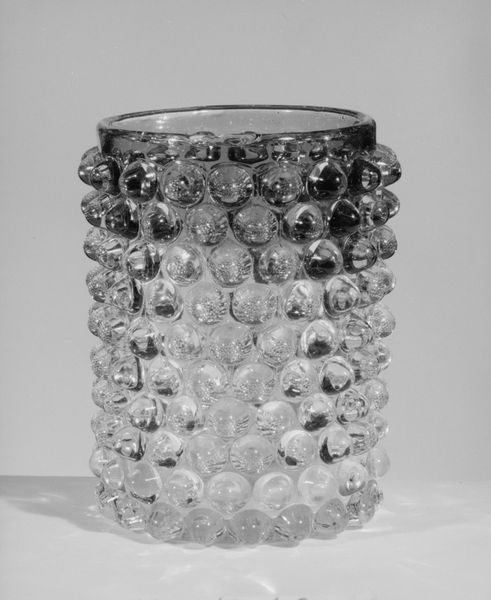
glass, sculpture
#
art-nouveau
#
glass
#
sculpture
#
united-states
#
decorative-art
Dimensions: H. 3 3/4 in. (9.5 cm)
Copyright: Public Domain
Hobbs, Brockunier and Company made this tumbler out of glass, sometime between 1863 and 1891. It’s now part of the Met’s collection. The opalescent glass, formed into a cylindrical shape and covered with raised, textured bumps, speaks to a particular moment in American industrial history. During this period, glass production was becoming increasingly mechanized. Companies like Hobbs, Brockunier sought to create affordable, attractive glassware for a growing middle class. This tumbler exemplifies how industrial design could blend functionality with aesthetic appeal. The bumps, while decorative, also provide a better grip. The choice of opalescent glass suggests an aspiration to luxury, mimicking the look of more expensive materials like porcelain or even opal gemstones. We can look to company catalogs and period advertisements to understand how this type of glassware was marketed and consumed. The tumbler reflects the social and economic shifts of its time, making accessible what once would have been a preserve of the upper classes.
Comments
No comments
Be the first to comment and join the conversation on the ultimate creative platform.

